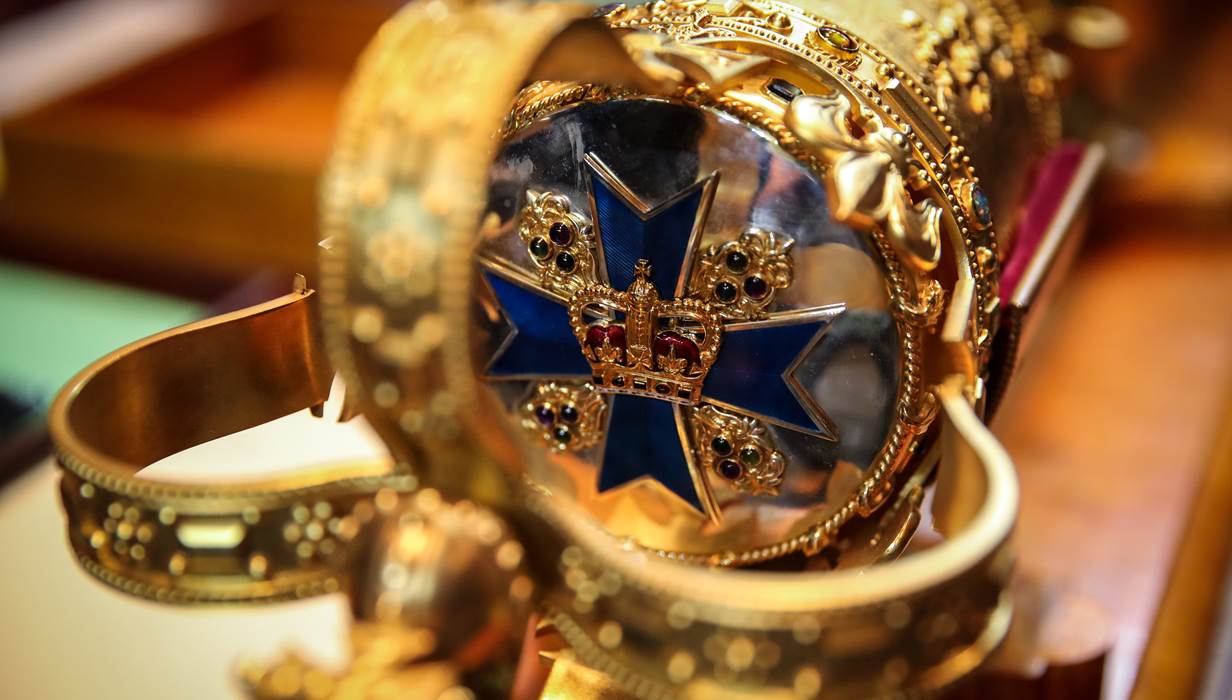Eight People Powering Parliaments
To mark International Day of Parliamentarism (World Parliament Day) 2023, this CPA blog examines some of the ancient and modern roles in Commonwealth Parliaments.
Every Parliament in the Commonwealth, large and small, has a team of people making it run like clockwork. This involves many different parliamentary staff with roles that date back hundreds of years to new, modern roles that have just been created. Parliamentary staff also take on different duties in addition to their day-to-day roles.
Here, we look at some of the ancient and modern roles undertaken by parliamentary staff in many Commonwealth Parliaments.
1. The Clerk of the Parliaments
In the UK Parliament, the role of the Clerk of the Parliaments originated towards the end of the 13th century in the reign of King Edward I. The plural term 'Clerk of the Parliaments' came into existence in King Henry VIII's reign and signifies that the Clerk of the Parliaments serves from one Parliament to the next.
The Clerk of the Parliaments Act, 1824 still governs the duties of the Clerk who is appointed by the Crown under Letters Patent, on the advice of the Leader of the House following consultation with the membership.
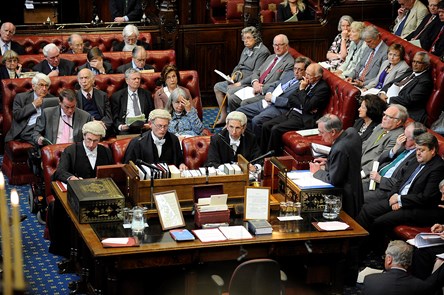
Above: The Clerk the Parliaments in the UK House of Lords is seated on the right at the Clerks Table with the Clerk Assistant and Reading Clerk next to him. The Clerk sits on the right to be easily accessible from the Government despatch box. (Image credit: UK Parliament).
Today, the Clerk of the Parliaments is responsible for the services provided by the permanent administration of the UK Parliament’s Upper House – the House of Lords - to meet the House's corporate objectives. The Clerk of the Parliaments is also custodian of the records of the UK Parliament stored in the Victoria Tower in the House of Lords. The 65th Clerk of the Parliaments in the UK is Simon Burton who took up office on 2 April 2021.
A number of bicameral Commonwealth Parliaments – such as the New South Wales Parliament for example – have adopted the title of ‘Clerk of the Parliaments’ for the Clerk of the Upper House.
Source: UK Parliament website
2. Clerk of the House (or the Clerks-of-the-Table)
In most Commonwealth Parliaments, the Clerk of the House sits at the Table of the House (in the lower Chamber if bicameral), near to the Speaker's Chair, for part of every sitting of the Parliament.
The historic role of the Clerks-at-the-Table is to record the decisions of the House, which they continue to do. This is not to be confused with Hansard, which is a record of what is said. The Clerks-at-the-Table are consulted by the Speaker or the Deputy Speaker, Ministers, Whips, and Members, on any matter that may arise in the conduct of a sitting. The Clerk of the House also has many other duties including administering the Oath of Allegiance at the start of a parliamentary sitting.
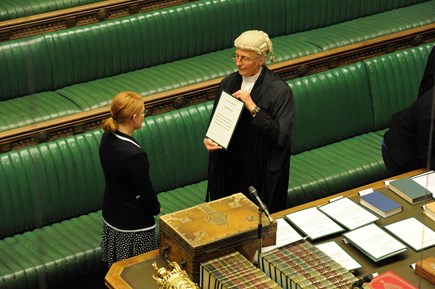
Above: The Acting Clerk of the UK House of Commons, Philippa Helme (Principal Clerk Table Office) administers the Oath of Allegiance for a newly elected Member of Parliament. (Image credit: UK Parliament).
In many Commonwealth Parliaments, the Clerks-at-the-Table wear dark suits, black gowns and white neck ties or bands. For some ceremonial occasions – such as the Opening of Parliament - the Clerk of the House may wear full ceremonial dress.
The Society of Clerks-at-the-Table (SoCATT) was founded in 1932 by Owen Clough, a former Clerk of the Senate of South Africa. When Sir Howard D’Egville founded the Commonwealth Parliamentary Association (then the Empire Parliamentary Association), Clough became the CPA South Africa Branch Secretary which gave him the opportunity to visit Australia and Canada to see other Parliaments at work. As a result, on his retirement from the Clerkship of the Senate, he created a society for the officers of Parliaments that would run alongside the CPA and continues today.

Above: Parliamentary Clerks from across the Commonwealth at the 56th Society of Clerks-at-the-Table (SoCATT) Meeting held in the margins of the 65th Commonwealth Parliamentary Conference in Halifax, Nova Scotia, Canada in August 2022. (Image credit: Parliament of Canada/CPA Headquarters).
3. Black Rod
Several Commonwealth Parliaments have appointed someone in the role of Black Rod in their Upper House.
The role originates in the UK House of Lords where Black Rod (also known as the Lady or Gentleman Usher of the Black Rod) is a senior officer appointed by the Crown, responsible for controlling access to and maintaining order within the Upper House and its precincts as well as responsibility for many of the major ceremonial events in the Palace of Westminster. Black Rod is also responsible for the King's residual estate in the Palace (e.g. the Robing Room and the Royal Gallery).
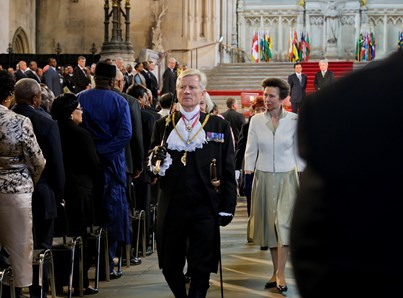
Above: At the 57th Commonwealth Parliamentary Conference in 2011 at the UK Parliament, Black Rod processes ahead of HRH The Princess Royal in Westminster Hall following the conference opening ceremony. (Image credit: UK Parliament).
One of Black Rod's most prominent roles is at the State Opening of the UK Parliament when Black Rod is sent from the Lords Chamber to the Commons Chamber to summon MPs to hear the Sovereign's Speech. Traditionally the door of the House of Commons is slammed in Black Rod's face to symbolise the Commons’ independence. Black Rod then bangs three times on the door with the rod. The door to the Commons Chamber is then opened and all MPs follow Black Rod back to the Lords to hear the Sovereign's Speech.
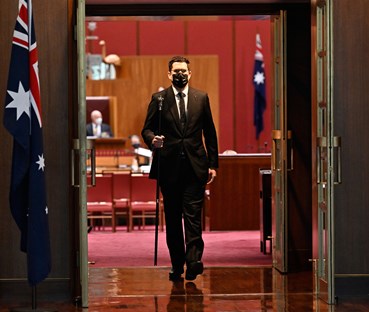
Above: The Usher of the Black Rod in the Senate of Australia carries the black rod as a symbol of their role. (Image credit: AUSPIC-20220193-33043)
In the Australian Federal Parliament, the Usher of the Black Rod in the Senate is also responsible for the Black Rod itself, which is their official symbol. The Black Rod is 1.44 metres long and made of ebony wood. It has a silver crown on the end above the Australian Coat of Arms. The Usher carries the Black Rod on ceremonial occasions.
In the Parliament of Canada, the Usher of the Black Rod is a senior parliamentary officer appointed by the Governor in Council as a senior protocol officer in the Senate of Canada.
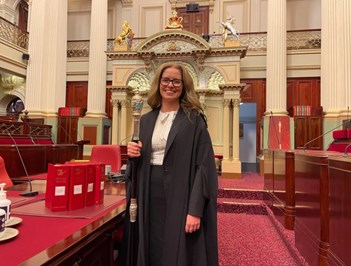
Above: Sally West is the first female Usher of the Black Rod at the Parliament of Victoria and the first woman to coordinate the opening of a Victorian Parliament. (Image credit: Parliament of Victoria).
At the Parliament of Victoria, Sally West is the first female Usher of the Black Rod and the first woman to coordinate the opening of a Victorian Parliament which included welcoming the Governor of the State of Victoria and requesting Members of the Legislative Assembly attend the ceremony taking place in the Legislative Council. “I consider it a real privilege to be the first female Usher of the Black Rod here in Victoria,” she said in a recent interview.
4. Serjeant-at-Arms
In many Commonwealth Parliaments, the Serjeant-at-Arms is responsible for keeping order and security in the House as well as controlling who has access to the floor of the Chamber. There are also some ceremonial aspects to the role, and it is often the Serjeant-at-Arms who carries the parliamentary mace into the Chamber ahead of the Speaker or Presiding Officer.
The office of Serjeant-at-Arms in the UK Parliament dates back to 1415 and the reign of King Henry V when the Serjeant was responsible for carrying out the orders of the sovereign, including making arrests. Today, the Serjeant at Arms performs ceremonial duties that date back to the early days of the office, for example carrying the parliamentary mace in the Speaker's Procession each day and also into the House of Lords during the State Opening of Parliament.
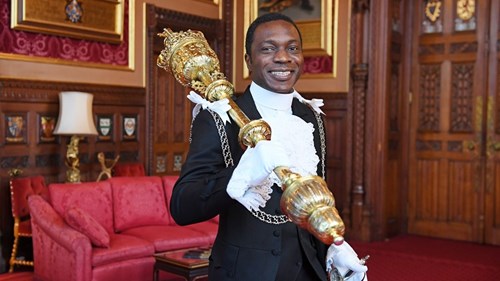
Above: The UK Parliament’s Serjeant-at-Arms, Ugbana Oyet getting ready to carry the parliamentary mace in the Speaker’s daily procession. (Image credit: UK Parliament/Jessica Taylor)
In the UK Parliament, the Serjeant-at-Arms is responsible for the House of Commons chamber, public galleries, Committee rooms and the Commons' areas of the parliamentary estate. The Serjeant-at-Arms wears a traditional uniform and a sword. To mark Black History Month, Ugbana Oyet spoke to the CPA UK Branch recently about his role as the Serjeant-at-Arms.
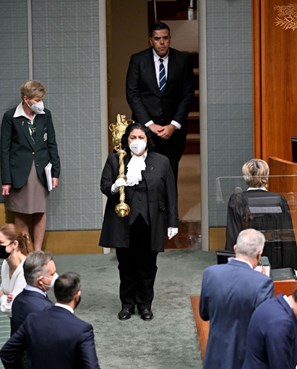
Above: In the Australia Federal Parliament, the Serjeant-at-Arms processes ahead of the Speaker of the House of Representatives at the start of a parliamentary sitting in the Chamber. (Image credit: Australia Parliament/AUSPIC_1).
In the Australia Federal Parliament, the Serjeant-at-Arms is a senior parliamentary officer in the House of Representatives. The Serjeant-at-Arms is one of the few people allowed inside the House who is not a Member of Parliament. On normal sitting days the Serjeant-at-Arms wears a black business suit. On ceremonial occasions, they wear a simple version of the traditional dress.
In the Parliament of Sri Lanka, the first Serjeant-at-Arms was appointed in 1947 and the parliamentary mace was presented by the UK House of Commons in 1949. Under Article 65(3) of the Sri Lankan Constitution, the Serjeant-at-Arms is appointed by the Secretary-General of Parliament with the approval of the Speaker and duties include custodian of the parliamentary mace, removal of Members of Parliament under the direction of the Speaker and accompanying witnesses to the Bar of the House.
In the Parliament of Canada, there have been Serjeant-at-Arms of the House of Commonssince 1867. Appointed by Letters Patent under the Great Seal, the Sergeant-at-Arms performs many ceremonial and administrative duties and, as a commissioner of oaths, is one of the officers who may administer the oath of allegiance to newly elected Members. In accordance with the Standing Orders, the Sergeant-at-Arms preserves order in the galleries, lobbies and corridors, and is responsible for taking into custody strangers who misbehave in the galleries. Traditionally, the position has been held by military officers.
5. Indigenous Liaison Officer
Two of the Parliaments in the CPA Australia Region have appointed an Indigenous Liaison Officer or similar role to engage with communities and to foster outreach for their Parliament. It is a fairly unique role in Commonwealth Parliaments, but is something that several Legislatures are considering.
The CPA’s Journal, The Parliamentarian, featured the case study of the first Aboriginal Liaison Officer appointed to the Parliament of New South Wales in 2021 to ensure the Parliament is better placed to engage with Aboriginal communities across New South Wales.
“This historic and deeply significant appointment, only the second to be made in Australia, was a huge step towards making the Parliament of New South Wales a more welcoming place for Aboriginal communities.” - Hon. Matthew Mason-Cox, MLC, President of the New South Wales Legislative Council and Hon. Jonathan O’Dea, MP, Speaker of the Legislative Assembly of New South Wales.
The role is an important resource for Members and staff, in supporting interactions with Aboriginal communities via their work in electorates across the State, providing advice on cultural protocols and significant events, assisting with committee activity and guiding Parliamentary events and programs. Over time, this role will help work towards breaking down the barriers that have traditionally been in place for Aboriginal people seeking to understand, access and engage with the Parliament of New South Wales, in recognition of the importance Aboriginal voices play in the future of the Parliament.
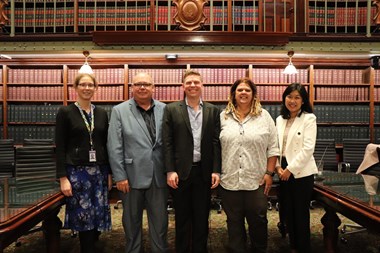
Above: The New South Wales Parliament’s Aboriginal Liaison Officer, Steven Collins, pictured centre, with staff members during an event for Reconciliation Week. (Image credit: Parliament of New South Wales).
6. Parliamentary Accessibility Advisor
In today’s modern Commonwealth Parliaments, accessibility is a key factor for all stakeholders – Parliamentarians, parliamentary staff, visitors and the general public.
The New Zealand Parliament has shown its commitment to making Parliament accessibly through the appointment of a full-time permanently employed Senior Accessibility Adviser last year who works with the Parliamentary Service to proactively identify and address barriers to accessing Parliament and its processes.
The New Zealand Parliament established an Accessibility Reference Group in June 2021 comprised of disabled people from around the country. The group drew on their lived experience of disability to provide advice to the Parliamentary Service and the Office of the Clerk on how to make Parliament’s buildings, systems and communications more accessible for all.
Through their recommendations, the group was successful in getting the Parliament to improve access to services, conduct an accessibility audit of the public areas of the Parliamentary precinct, join the hidden disabilities sunflower program, and offer additional training for staff around disability awareness and basic New Zealand Sign Language. The final outcome of the group was the appointment of the Parliamentary Accessibility Advisor.
“Disability and accessibility comes down to the individual experience. And so one size doesn’t necessarily fit all. So it’s about talking to people, people that it does affect, and working through them.” - Stew Sexton, Senior Accessibility Advisor at the New Zealand Parliament (RNZ interview)
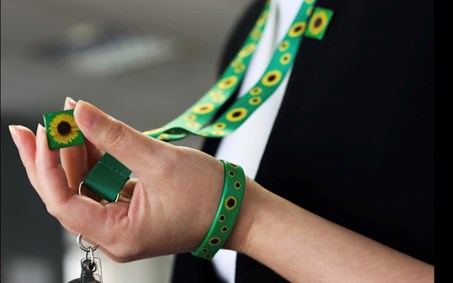
Above: Hidden Disabilities Sunflower Lanyards and badges are available for Members, parliamentary staff and visitors at the New Zealand Parliament. (Image credit: NZ Parliamentary Service).
In the UK Parliament, ParliAble is a Workplace Equality Network (WEN) in support of disabled individuals who work in the Parliament. The network provides peer support to identify and address the barriers that disabled people face and supporting the Parliament to make workplace adjustments.
Read the CPA blog by Irving Anderson, a member of parliamentary staff at the UK Parliament, who writes about how the introduction of Workplace Equality & Diversity Networks (WEDNs) has helped to create a diverse and inclusive workplace for all.
Want to find more strategies to make your Parliament accessible? Take our online course with the CPA Parliamentary Academy on 'Making Parliaments Accessible'
7. Hansard Editors and Assistants
Hansard is the traditional name of the transcripts of parliamentary debates in many Commonwealth Parliaments and Legislatures. Hansard is a ‘substantially verbatim’ report of what is said in Parliament. Members’ words are recorded, and then edited by a team of staff to remove repetitions and obvious mistakes, albeit without taking away from the meaning of what is said. Hansard also reports decisions taken during a sitting and records how Members voted to reach those decisions in Divisions.
'The Hansard' is named after Thomas Curson Hansard (1776–1833), a London printer and publisher, who was the first official printer to the UK Parliament at Westminster.
Historically, Hansard was a printed document - some people even used to pay for a subscription. Today, in the UK Parliament for example, the Hansard is still printed each day for distribution to Members, however the majority of MPs and parliamentary staff access the reports online. Separate Hansard reports are issued for both the House of Lords and the House of Commons, with Committee proceedings, written ministerial statements, petitions and ministerial corrections also included.
The Hansard team of Editors, Sub-Editors, Managing Editors and Assistants work together to publish a ‘rolling’ version of the report throughout the day of the sitting and a daily report published overnight ready for the following morning.
Many Parliaments and Legislatures in the Commonwealth have adopted 'The Hansard' as the name of the official verbatim record of what has been said in Parliament. It also includes records of votes and written ministerial statements. Reports are usually published daily covering the preceding day's events.
In Australia, The Hansard is the report of the proceedings of the Australia Federal Parliament and its Committees. This includes the Senate, House of Representatives, the Federation Chamber and all Parliamentary Committees.
In the Parliament of South Africa, the Hansard Papers are the verbatim report of parliamentary proceedings.
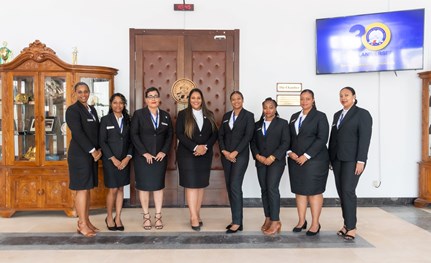
Above: The newly named ‘Hansard’ team from the National Assembly of the Seychelles. (Image credit: Seychelles National Assembly).
As part of the 30th anniversary celebrations for the National Assembly of Seychelles recently, the Parliamentary Reporting Unit was officially renamed as 'The Hansard'. The team of parliamentary reporters ensure that proceedings are recorded through an official report.
In a statement, the National Assembly of Seychelles explained that the change had been enacted to ensure that the National Assembly Secretariat continue implementing the best-known practices and ensuring that the parliamentary services were consistently in line with international parliamentary standards. This includes ensuring that parliamentary staff can effectively exchange information with Hansard units from other Parliaments globally. Read about this in the latest issue of The Parliamentarian.
8. Coach, captain or player for a Parliamentary Sports Team
Sport provides a great opportunity for both Members of Parliament and parliamentary staff to participate in an activity together across party-lines.
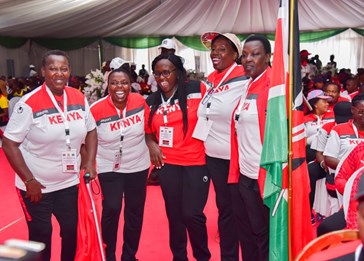
Above: Members of the Kenya Parliament sports team who participated in the 12th East African Community (EAC) Inter-Parliamentary Games in South Sudan. (Image credit: Kenya Parliament/EAC).
Commonwealth Parliamentarians and parliamentary staff from across the CPA Africa Region participated in the 12th East African Community (EAC) Inter-Parliamentary Games in Juba, South Sudan at the end of last year. The Games saw men and women from East African Parliaments including Kenya, Rwanda, Tanzania and Uganda competing in various sports at the EAC Bunge Games. Sports included football, athletics, basketball, netball, darts, volleyball and tug-of-war.
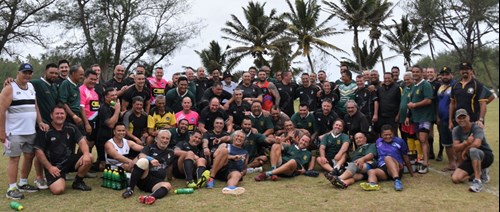
Above: Members of the Parliaments of New Zealand and the Cook Islands who played in a closely fought parliamentary rugby match. (Image credit: Cook Islands News/22103001).
In the CPA Pacific Region, it was rugby union that provided the competitive spirit between the Parliaments of New Zealand and the Cook Islands who played in a closely fought parliamentary rugby clash that ended in a 15-15 draw. The Cook Islands Minister of Sports, Vaine Mokoroa captained his team while the captain of the New Zealand First XV was Mike Woodhouse, MP. The Sir Terepai Maoate Trophy was due to be presented at the end of the match – but was held back as there was no outright winner. The Members of the New Zealand Parliament also visited a number of cultural and community projects including a school visit to Apii Takitumu during their visit.
The UK Women’s Parliamentary Football Club brings together Members of Parliament and parliamentary staff for matches, training and events to support inclusiveness.
The National Assembly of Zambia sponsors men's, women's and youth football teams which compete in different national leagues. The National Assembly Football Club was established in 1995 and has produced a number of players that have triumphed locally, regionally and overseas. Currently the men’s team is playing in the Football Association of Zambia (FAZ) Lusaka Provincial League while the women’s team is in the FAZ Women Zone A Super League and the youth team, Young NAZ FC, is in the Lusaka Football Association Premier A League. The Speaker of the National Assembly, Rt Hon. Nelly Mutti, MP, who is the Patron of the football team, recently challenged the men's team to work extra hard in order to get back to the ‘top flight’ of Zambian football.
To mark International Day of Parliamentarism (World Parliament Day) 2023, the CPA is supporting the #Parliaments4thePlanet campaign by the Inter-Parliamentary Union (IPU).

Original publication here





